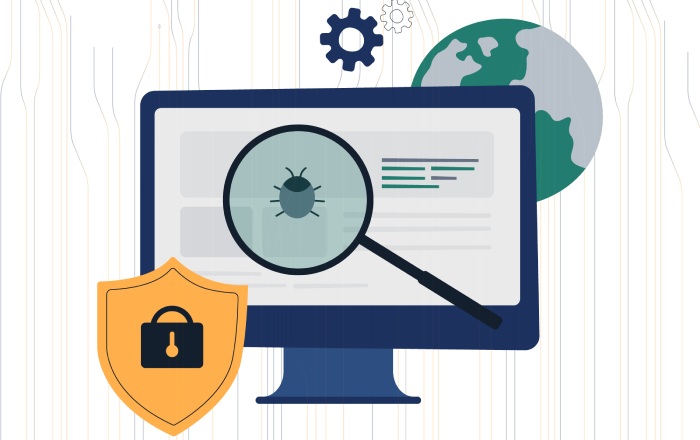We all know how Office 365 consists of (almost) all the tools required to increase productivity at work. However, as with any other piece of software, the widely used Microsoft product has its cons. A significant issue that worries users is data security or, rather, data vulnerability and whether the phishing protection measures are enough to ensure that their data is safe.
Requirements Of Phishing Protection With Office 365
As a widely-used IT solution and deployed as an archive of everything by many organizations, the platform contains volumes of confidential and sensitive data of businesses around the globe. For many people with malicious intentions in the cyber world, the system must present a mouthwatering target. A data breach through a user’s email will be enough to deal a severe blow to any organization.
These practices, often termed as phishing attacks, easily bypass traditional antivirus software available in the market. The majority of internet users with email accounts have received scam emails in the past. These emails come in all shapes and sizes, but the ultimate goal of the attacker is to defraud unsuspecting users. Another target of these cybercriminals is to fool you or hack your system to get access to your sensitive information. So, a phishing attack aimed at getting your Office 365 user credentials is a genuine threat. And, especially with a cloud-based service like Office 365, there is the ever-present question, “Is my data really secure?” that’s always nagging the user’s mind.
In IT, an organization’s traditional solution to address such an issue would be using advanced protection methods to safeguard their systems and protect themselves from these cyber-attacks. In services like Office 365, much of that falls on the provider. Since this software program is used worldwide by businesses and major IT giants for data manipulation and handling, control measures must be put in place for phishing protection and to intercept data malpractices such as breach of data, or fraudulent use of user-sensitive data.
Office 365 Security Update And The Improved Phishing Protection Features
Microsoft is doing well to provide adequate phishing protection and continuously improves Office 365 to keep its users safe from falling prey to such attacks. As a security enhancement and a countermeasure against phishing attacks, Microsoft Office 365 provides regular updates. Some of these improved features with the latest update are listed below:
- Spoofing and Impersonation Protection: A common spoofing technique involves sending emails to office employees, persuading them to open attachments and send funds through websites. Office 365 phishing protection update gives the admin the ability to identify and block all such attempts involving their users and domains. Administrators can easily detect such malpractices with the help of the advanced threat protection features of Office 365. Cyber-attackers impersonating employees can also be tracked and blocked.
- Significant Content Detonation and Protection: Earlier versions of this software package provided the ability to scan email attachments before they entered the user’s inbox. Scanning of attachments enabled the admins to block malicious data which posed threats to the users of any organization. In addition to these advanced features, Microsoft has now enabled content detonation and protection to identify texts which could tempt the user to follow a link leading to malicious content.
- Cross–Platform Content Evaluation: Gone are the days when phishers limit their activities to emails. Previously ignored sites like SharePoint and OneDrive are now rife with attackers using the platforms through hijacked credentials to introduce malware and other infected files. Users fall prey to such practices thinking content available on such sites are safe to use. This situation is where Office 365 phishing protection update comes into play, by offering file detonation in both these platforms.
- Assessments to Keep Unguarded Phishing Attacks in Check: Apart from preventing phishing attacks, it is also essential to inform the users of such practices. ‘KnowBe4’ is a product which ensures security awareness of the end-users. They regularly send test phishing emails to the users to keep a check on the users who may fall prey to such traps. Microsoft has also developed a personalized version of a simulator as part of its Office 365 phishing protection update. The feature helps the administrators send test phishing emails to users. Such events can help with easy identification of users who require more guidance to be able to recognize such malicious emails and for targeted training. This new feature is sure to prove very beneficial for any organization to make its users aware of phishing attacks.
How To Set Up The Phishing Protection Controls In Office 365
You can set up the controls in Microsoft Office 365 through the following steps:
- Security and compliance management
- Admin center
- Threat management > Policy
It is necessary to set up the Anti-Phishing controls for Advanced Threat Protection to get the benefits and protection of the advanced features of Office 365.
The controls can be set up in three different options:
- ATP Anti-Phishing – The system detects when someone impersonates your user and domains. This feature keeps check of phishing in general and also protects your organization’s reputation.
- ATP Secure Attachments – Office 365 checks for malicious attachments and then initiate necessary actions to protect your organization from the threat.
- ATP Links – The system protects your organization and all users by verifying whether or not a URL or any attached Office document is safe to click. This feature mitigates risks of opening infected files or attachments embedded with threats.
After you set up the policies that best meet the requirements of your organization, you are protected by the advanced features of the Advanced Threat Protection Policies of Microsoft Office 365.
Points To Note About The Office 365 Phishing Protection Update
Even though the advanced phishing protection features of Office 365 are meant to mitigate the risks posed by malicious attacks, there can be unintentional blocking of sensitive information like banking details, medical records, and Social Security numbers, etc. All these are vital information that can cause severe issues if not shared timely.
The administrators in an organization should make sure that they are adept at using the platform and its features. They should also understand the implications of each policy and filter that comes as part of the phishing protection measures in Office 365.


